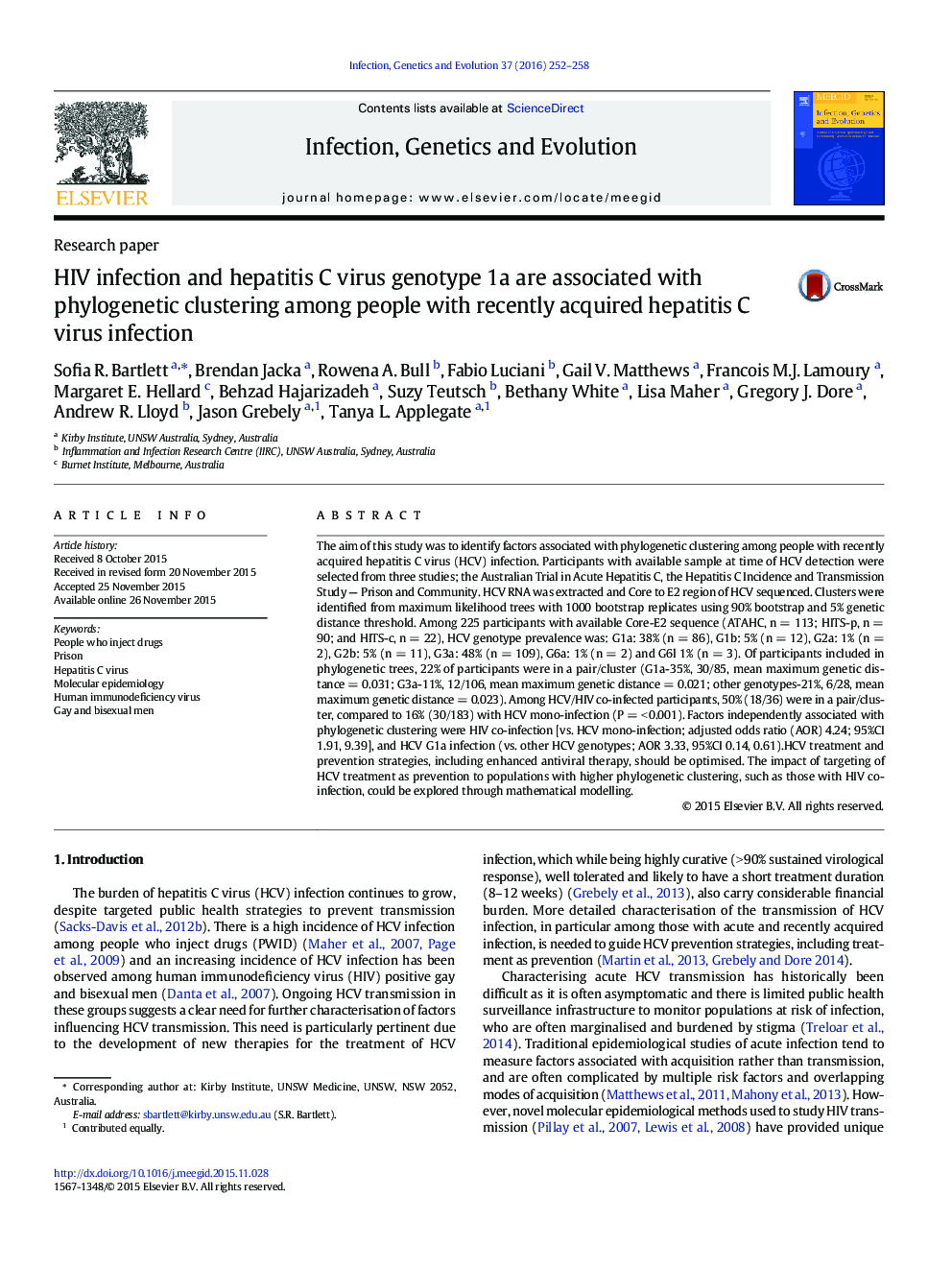| کد مقاله | کد نشریه | سال انتشار | مقاله انگلیسی | نسخه تمام متن |
|---|---|---|---|---|
| 5909113 | 1570166 | 2016 | 7 صفحه PDF | دانلود رایگان |

- We characterised the phylogenetics of recent HCV in Australia from 2004 to 2014.
- 22% of participants were identified as being in a phylogenetic pair/cluster.
- HIV coinfection & G1a were independently associated with being in a pair/cluster.
- These factors may be associated with a greater potential for HCV transmission.
- HCV prevention & treatment interventions could be targeted to those with HIV.
The aim of this study was to identify factors associated with phylogenetic clustering among people with recently acquired hepatitis C virus (HCV) infection. Participants with available sample at time of HCV detection were selected from three studies; the Australian Trial in Acute Hepatitis C, the Hepatitis C Incidence and Transmission Study - Prison and Community. HCV RNA was extracted and Core to E2 region of HCV sequenced. Clusters were identified from maximum likelihood trees with 1000 bootstrap replicates using 90% bootstrap and 5% genetic distance threshold. Among 225 participants with available Core-E2 sequence (ATAHC, n = 113; HITS-p, n = 90; and HITS-c, n = 22), HCV genotype prevalence was: G1a: 38% (n = 86), G1b: 5% (n = 12), G2a: 1% (n = 2), G2b: 5% (n = 11), G3a: 48% (n = 109), G6a: 1% (n = 2) and G6l 1% (n = 3). Of participants included in phylogenetic trees, 22% of participants were in a pair/cluster (G1a-35%, 30/85, mean maximum genetic distance = 0.031; G3a-11%, 12/106, mean maximum genetic distance = 0.021; other genotypes-21%, 6/28, mean maximum genetic distance = 0.023). Among HCV/HIV co-infected participants, 50% (18/36) were in a pair/cluster, compared to 16% (30/183) with HCV mono-infection (P = < 0.001). Factors independently associated with phylogenetic clustering were HIV co-infection [vs. HCV mono-infection; adjusted odds ratio (AOR) 4.24; 95%CI 1.91, 9.39], and HCV G1a infection (vs. other HCV genotypes; AOR 3.33, 95%CI 0.14, 0.61).HCV treatment and prevention strategies, including enhanced antiviral therapy, should be optimised. The impact of targeting of HCV treatment as prevention to populations with higher phylogenetic clustering, such as those with HIV co-infection, could be explored through mathematical modelling.
220
Journal: Infection, Genetics and Evolution - Volume 37, January 2016, Pages 252-258